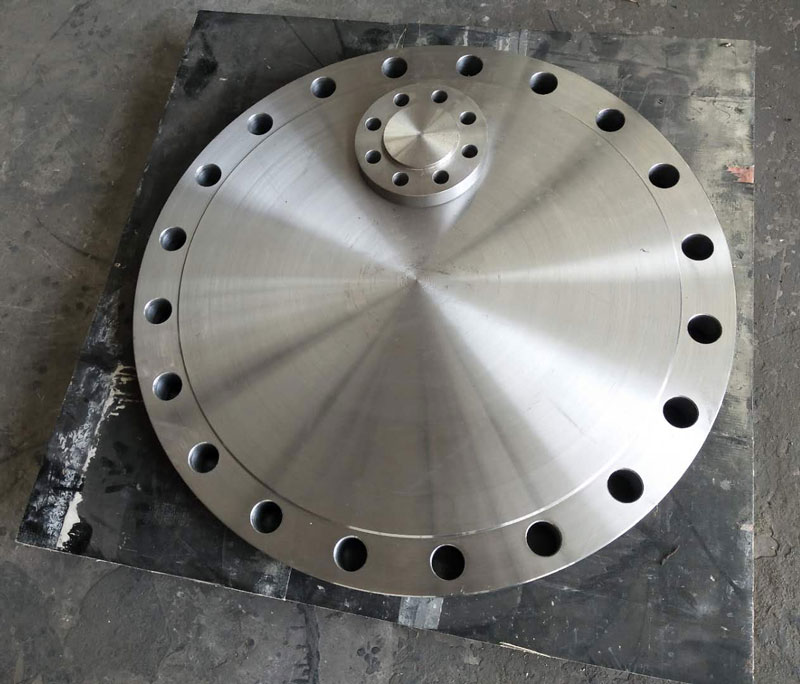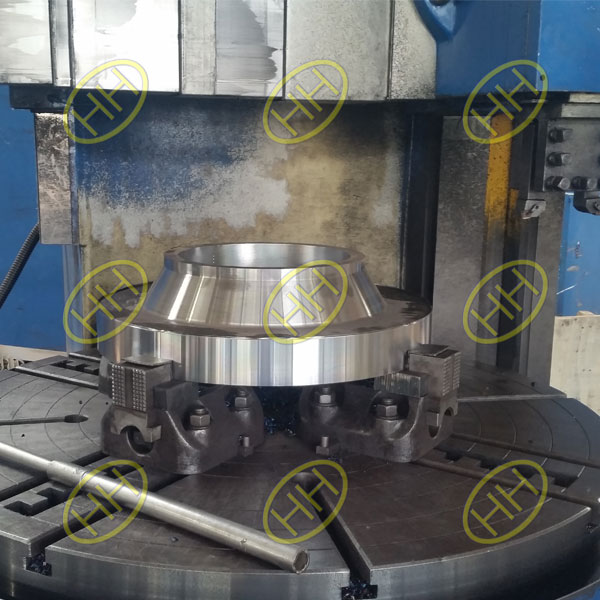Technical requirements for flange forging process
The use condition of flange refers to the importance,working condition,difficulty and complexity of assembling and disassembling,complexity of them,such as force,working temperature,corrosion degree and other factors.
The basic principle of forging is to meet and serve the use conditions of the parts,the technical requirements of forged flanges should include two aspects,one is the required shape,size and surface of forgings,the other is the requirements of structure and mechanical properties.
The key to meeting the requirements of forgings is correctly selecting the raw materials,and strictly controlling the production process as well as the quality of the raw materials.Furthermore,effective quality control is implemented through rational development of forging process.
Forgings of choice is usually determined by the product design, this is the rules, in addition to the basic properties of materials,namely, yield strength, tensile strength, plasticity and fracture toughness, in order to reduce the structure weight, in addition to the two important parameters, the intensity of weight ratio and stiffness weight ratio, physical properties and process properties (ductility, hardenability, machinability,weldability,etc) and economic efficiency must also be taken into account.
Requirements for choosing raw materials
Choosing the most reliable raw materials is the premise of forging quality.The main processes that determine the quality of raw materials are smelting,ingot casting and semi-finished products processing.The technical requirements for raw material selection are summarized below:
Chemical composition – The content of alloying elements, harmful impurities, gases and residual elements in the materials shall meet the technical standards and relevant technical conditions or agreements, and shall be strictly controlled according to the production conditions as far as possible.The distribution uniformity of alloying elements must be required.
Smelting technology – Ultra-high strength steel,titanium alloy and high-temperature alloy are produced by vacuum arc remelting method, among which titanium alloy and high-temperature alloy requirements are not less than 2 times;Alloy structural steel, stainless steel and heat-resistant steel are produced by electric arc furnace, or by double process of arc furnace and electroslag remelting or other better smelting methods.Aluminum alloy is usually smelted in flame furnace,electric resistance furnace and induction furnace. High quality aluminum alloy requires a series of technological measures to strictly control the impurity content and diversify the heat treatment conditions of the materials.
Material specifications,surface quality and dimensional tolerances are based on the production process and quality requirements of forgings. The specifications of the materials include ingots, bars (rolled, forged, extruded), billets, flats, etc. When forgings have strict streamline distribution requirements, care should be taken to select the flow direction of the raw material to coordinate with the streamline distribution specified by the forging. Surface defects of raw materials, such as cracks, folds, crusting, double skin, etc., may cause problems on the surface of the forging, and therefore should be avoided. The dimensional tolerance of raw materials has an important influence on the precise forming of forgings, so the requirements of this should be clearly defined.
Material forging ratio – Materials should be guaranteed to have a sufficiently large degree of deformation, that is, the forging ratio should be specified within a suitable range to ensure sufficient deformation of the material and to reduce or eliminate the cast structure in the material. For large forgings, the forging ratio of raw materials is generally required to be greater than 6-8.
Mechanical property
The mechanical properties of raw materials include properties at room temperature and high temperature, such as strength index, plasticity index, impact toughness, hardness, fracture toughness, permanent strength, fatigue properties, stress corrosion resistance, etc., which should be regulated based on flange forgings and their uses. The differences are specified separately according to the technical requirements for raw materials. Some mechanical properties of large-size raw materials are somewhat low, so be careful when choosing materials.
Microstructure
It is the requirement for the microstructure, grain size (for steel) and purity of the raw materials in the final heat treatment state. The organization of the material has a decisive influence on its properties. Some abnormal structures in the raw material, such as excess ferrite in austenitic and martensitic stainless steels, eutectic compounds in other steels and aluminum and magnesium alloys, the low melting point in the high temperature alloy, the microstructure defects such as carbide segregation and banded structure, and the excessive grain size and low purity will not only seriously affect the performance of forgings, but also will increase the reject rate offorgings. Therefore, there should be clear requirements for microstructure of raw materials and they should be stated in the relevant technical standards.
Macrostructure
It is used to inspect and limit various low-magnification metallurgical defects in raw materials, such as white spots, shrinkage holes and cavities, bubbles, delamination, cracks, slag inclusions, pinholes, segregation, oxide film, etc., which have a serious impact on the performance and processability of forgings, and should be strictly limited and treated according to relevant technical standards.
Supply conditions of raw materials
It refers to the state of raw materials before they are put into production,including whether it is necessary to prepare heat treatment and whether the surface of the raw material needs to be processed to a certain roughness.
Materials manufacturability
It refers to the regulations on the forgeability, hardenability, machinability, weldability,etc. of raw materials. The forgeability of raw materials has an important influence on the forging forming and quality, which is often measured by two indexes – one is plasticity and the other is deformation resistance. The hot forging test is a method of indicating the forgeability. The hardenability, machinability and weldability of the material are the process properties that the forging must have in the process of machining into parts. The technical requirements of the material should be stated in the relevant technical standards.
Regulations for special inspection projects
Raw materials for important aviation forgings should be inspected by ultrasonic flaw detection to prevent or avoid the internal metallurgical defects of materials not found in the destructive inspection. Ultrasonic flaw detection methods and standards, as well as materials to be inspected, should be specified in the relevant technical conditions.
Repeated tests
If there are inspection results of raw materials that are not in conformity with the regulations, their repeated test should be differentiated and treated with caution. For forgings that are unqualified due to problems in sample processing (including sample heat treatment) and inaccurate test methods, or not caused by material defects, such as mechanical properties, chemical composition, etc., repeated tests are allowed. Low-magnification metallurgical defects of raw materials are not allowed to be re-inspected in principle (except where required and the raw material supplier uses the ultrasonic flaw detection method or other effective methods to screen the metallurgical defects of raw materials. However, in any case, steel with white spots should be discarded once discovered.)



